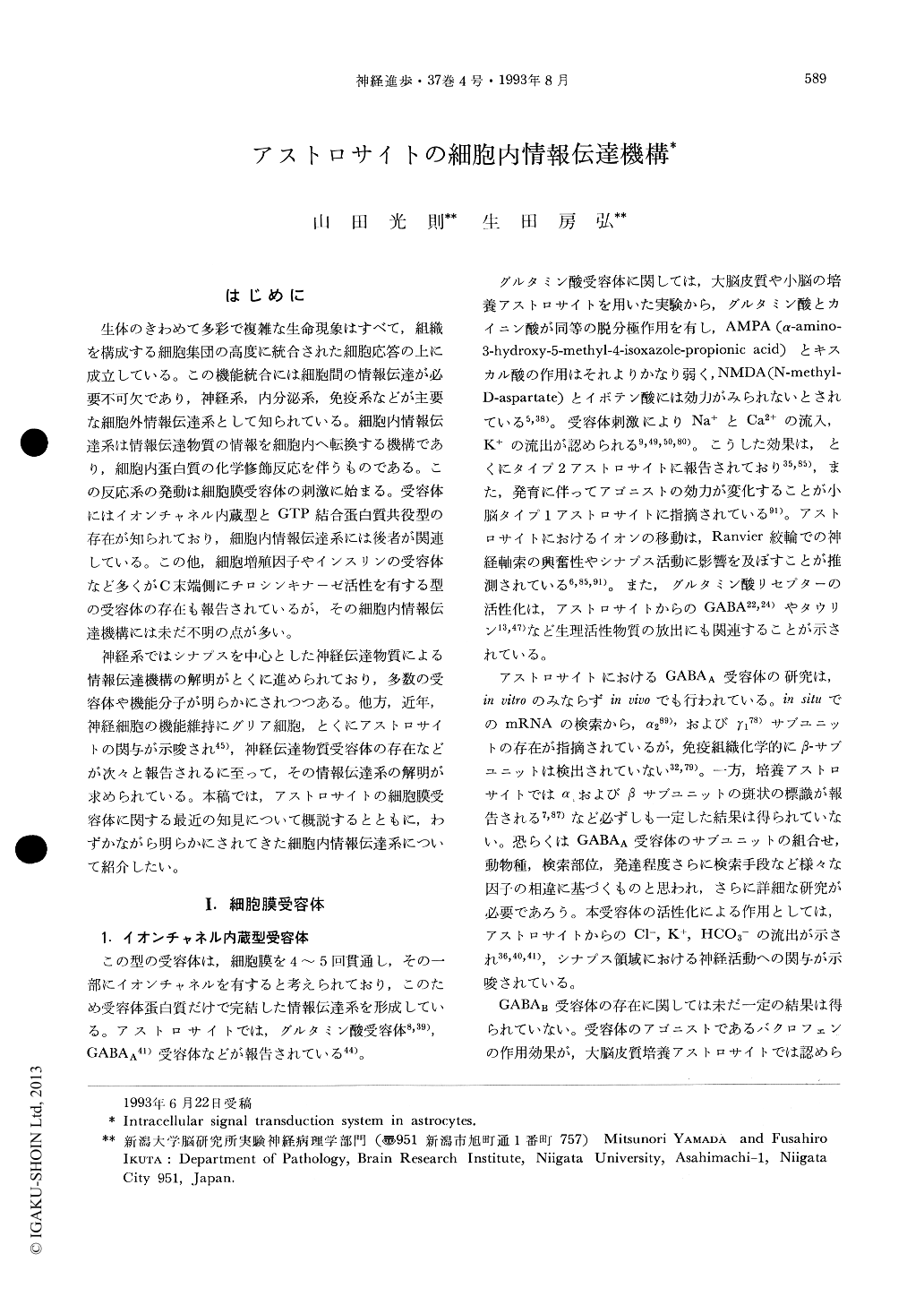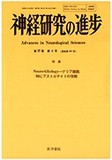Japanese
English
- 有料閲覧
- Abstract 文献概要
- 1ページ目 Look Inside
はじめに
生体のきわめて多彩で複雑な生命現象はすべて,組織を構成する細胞集団の高度に統合された細胞応答の上に成立している。この機能統合には細胞間の情報伝達が必要不可欠であり,神経系,内分泌系,免疫系などが主要な細胞外情報伝達系として知られている。細胞内情報伝達系は情報伝達物質の情報を細胞内へ転換する機構であり,細胞内蛋白質の化学修飾反応を伴うものである。この反応系の発動は細胞膜受容体の刺激に始まる。受容体にはイオンチャネル内蔵型とGTP結合蛋白質共役型の存在が知られており,細胞内情報伝達系には後者が関連している。この他,細胞増殖因子やインスリンの受容体など多くがC末端側にチロシンキナーゼ活性を有する型の受容体の存在も報告されているが,その細胞内情報伝達機構には未だ不明の点が多い。
神経系ではシナプスを中心とした神経伝達物質による情報伝達機構の解明がとくに進められており,多数の受容体や機能分子が明らかにされつつある。他方,近年,神経細胞の機能維持にグリア細胞,とくにアストロサイトの関与が示唆され45),神経伝達物質受容体の存在などが次々と報告されるに至って,その情報伝達系の解明が求められている。本稿では,アストロサイトの細胞膜受容体に関する最近の知見について概説するとともに,わずかながら明らかにされてきた細胞内情報伝達系について紹介したい。
In recent years, increasing evidences have indicated that astrocytes play key roles in many CNS functions and events including transsynaptic signaling, maintenance of blood-brain barrier and lesion repair. In this review, we focused on the functional receptors and intracellular signal transduction system in this cell type.
Many neuropharmacological researches have provided evidences that astrocytes display at least two types of receptors, ligand-gated ion channels and G protein-linked receptos. In the former, ionotropic glutamate receptor, GABAA and GABAB receptors are included. The later is linked to the intracellular signaling system, and contains many neurotransmitter receptors such as adrenergic, metabotropic gluta-mate, substance P and dopamine receptors. Concerning the second messenger systems, adenylate cyclase and phosphoinositide signaling pathways are reported to be present in astrocytes. G protein is a key molecule in these two pathways, and activates adenylate cyclase and phospholipase C (PLC). Amongst the subfamilies of G protein, Gs and Gi are demonstrated in astrocytes in vitro or in vivo. PLC cleaves phosphatidylinositol 4, 5-bisphosphate into two second messenger molecules, diacylglycerol and inositol 1, 4, 5-trisphosphate. PLC-δ is a major isozyme in astrocytes and localizes in the cytoplasm and processes, being associated with the plasma membrane, endoplasmic reticulum glial filaments and outer mem-branes of mitochondria. Protein kinase C (type II and III) is also demonstrated to be localized in the processes of astrocytes.

Copyright © 1993, Igaku-Shoin Ltd. All rights reserved.


